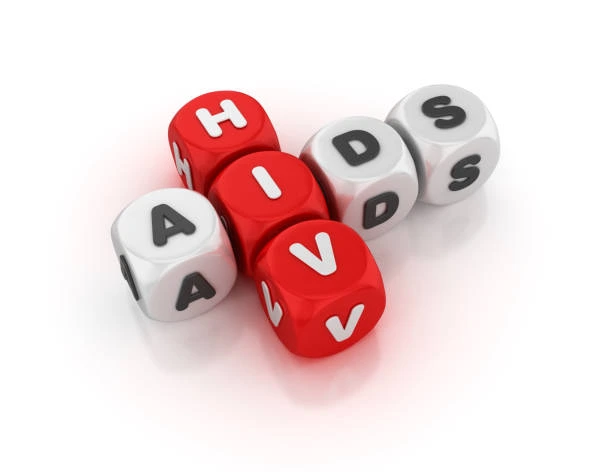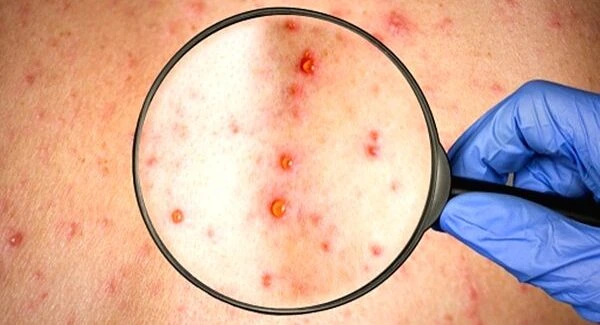A Complete Guide on HIV & AIDS

Posted Date: February 7th, 2023
HIV & AIDS Overview
Human Immunodeficiency Virus (HIV) and Acquired Immune Deficiency Syndrome (AIDS) are the two names that are used interchangeably to describe a life-threatening illness that attacks the immune system. HIV is a virus that weakens the immune system, making it easier for the person to catch other infections and illnesses. If not treated, the virus can progress to AIDS.
Where did HIV come from?
The origin of the human immunodeficiency virus (HIV) is not definitively known, but it is widely believed to have originated in non-human primates in Central Africa. The virus is believed to have jumped from primates to humans through the hunting and consumption of infected animals, a practice known as bush meat hunting.
The first known case of HIV in humans was reported in the Democratic Republic of the Congo (formerly Zaire) in the late 1970s. The virus quickly spread from Central Africa to other parts of the world, becoming a global pandemic by the early 1980s.
The exact origin of HIV is still a matter of scientific debate and further research is needed to determine the precise timeline and circumstances of its transmission from non-human primates to humans. However, the consensus among scientists is that the virus originated in Central Africa and spread to humans through the hunting and consumption of infected animals.
What is AIDS?
Acquired Immune Deficiency Syndrome (AIDS) is a condition caused by the human immunodeficiency virus (HIV). HIV attacks the body’s immune system, specifically the CD4 cells (T cells), which are crucial to fighting off infections and diseases. Over time, the virus can destroy so many of these cells that the body can no longer fight off infections and diseases, leading to the development of AIDS.
A person is considered to have AIDS when their CD4 cell count drops below 200 cells/mm3 or when they develop one or more opportunistic infections that are indicative of a severely weakened immune system. Opportunistic infections are infections that take advantage of a weakened immune system to cause illness.
Without treatment, AIDS can be a life-threatening condition. However, with antiretroviral therapy (ART), individuals with HIV can suppress the virus, strengthen their immune system and lead healthy lives. ART involves taking a combination of medications to suppress the virus and prevent the progression of the illness.
It is important to remember that HIV and AIDS are not the same thing. HIV is a virus that can lead to the development of AIDS, but with proper treatment and care, individuals with HIV can live long and healthy lives without ever progressing to AIDS.
What’s the difference between HIV and AIDS?
HIV (human immunodeficiency virus) and AIDS (Acquired Immune Deficiency Syndrome) are related but distinct terms.
HIV is a virus that attacks the immune system, specifically the CD4 cells (T cells), which are crucial to fighting off infections and diseases. Over time, the virus can destroy so many of these cells that the body can no longer fight off infections and diseases.
AIDS is a condition that occurs when the HIV virus has severely damaged the immune system, to the point where the body can no longer fight off infections and diseases. A person is considered to have AIDS when their CD4 cell count drops below 200 cells/mm3 or when they develop one or more opportunistic infections that are indicative of a severely weakened immune system. Opportunistic infections are infections that take advantage of a weakened immune system to cause illness.
It is important to remember that HIV and AIDS are not the same thing. HIV is the virus that can lead to the development of AIDS, but with proper treatment and care, individuals with HIV can live long and healthy lives without ever progressing to AIDS. Antiretroviral therapy (ART) is the standard treatment for HIV and it involves taking a combination of medications to suppress the virus and strengthen the immune system.
What are the stages of HIV?
The progression of the human immunodeficiency virus (HIV) can be divided into three main stages:
Acute Infection (Primary HIV Infection): This is the first stage of the illness, which occurs within the first 2-4 weeks after the virus is transmitted. During this stage, an individual may experience flu-like symptoms, such as fever, fatigue, muscle aches and sore throat. This is also the stage when the virus replicates rapidly and the individual is highly infectious.
Clinical Latent Infection (Chronic HIV): This is the stage of the illness that occurs after the initial primary infection. During this stage, the virus is present in the body but does not cause any symptoms in most cases. This phase can last for several years, during which time the virus is slowly damaging the immune system.
AIDS (Acquired Immune Deficiency Syndrome): This is the final stage of the illness, which occurs when the HIV virus has severely damaged the immune system, to the point where the body can no longer fight off infections and diseases. A person is considered to have AIDS when their CD4 cell count drops below 200 cells/mm3 or when they develop one or more opportunistic infections that are indicative of a severely weakened immune system.
It is important to note that the progression of HIV can vary greatly from person to person and with proper treatment and care, some individuals may never progress to the AIDS stage. Antiretroviral therapy (ART) is the standard treatment for HIV and it involves taking a combination of medications to suppress the virus and strengthen the immune system. ART can slow down the progression of the virus and prevent the development of AIDS.
Causes of HIV & AIDS
HIV is primarily spread through sexual contact, sharing needles, or from mother to child during pregnancy, childbirth, or breastfeeding. The virus attacks the body’s T-cells, a type of white blood cell responsible for fighting infections, making it harder for the body to defend itself from other infections and illnesses.
Precautions to Avoid HIV & AIDS
To prevent the spread of HIV, it is important to practice safe sex, use a condom and avoid sharing needles. Women who are pregnant and have HIV should receive medical care to lower the chance of passing the virus to their baby.
Symptoms of HIV & AIDS
Many people who are infected with HIV do not show any symptoms for several years. When symptoms do appear, they may include fatigue, fever, joint pain, skin rashes and swollen lymph nodes. As the virus progresses to AIDS, the person may experience severe symptoms such as weight loss, pneumonia and other infections.
Primary infection (Acute HIV) Symptom
Primary infection, also known as acute HIV, is the initial stage of the HIV virus when it first enters the body. This stage is characterized by a range of symptoms that can last anywhere from a few days to several weeks. Understanding the symptoms of primary infection can help individuals identify if they have contracted the virus and seek medical attention promptly.
Symptoms of Primary Infection (Acute HIV)
The symptoms of primary infection can vary from person to person and may include:
-
Flu-like symptoms: A person with primary HIV infection may experience symptoms similar to the flu, including fever, fatigue, muscle aches and sore throat.
-
Rash: A rash is a common symptom of primary HIV infection and can range from mild to severe.
-
Night sweats: Some individuals may experience night sweats during primary infection.
-
Headache: A headache is another common symptom of primary HIV infection.
-
Swollen lymph nodes: The lymph nodes, which are part of the body’s immune system, may become swollen during primary infection.
-
Mouth sores: Mouth sores are another possible symptom of primary HIV infection.
-
Diarrhea: Diarrhea can occur as a result of primary HIV infection.
It is important to note that not everyone with primary HIV infection will experience all of these symptoms and some individuals may have no symptoms at all.
Treatment of Primary Infection (Acute HIV)
Early detection and treatment of primary infection can greatly reduce the risk of transmitting the virus to others and slow the progression of the illness. Antiretroviral therapy (ART) is the standard treatment for primary HIV infection and can help suppress the virus and strengthen the immune system.
Clinical Latent Infection & Symptoms
Clinical Latent Infection, also known as Chronic HIV, is the stage of the HIV virus that occurs after the initial primary infection. During this stage, the virus is present in the body but does not cause any symptoms. This phase can last for several years, during which time the virus is slowly damaging the immune system.
Symptoms of Clinical Latent Infection (Chronic HIV)
In most cases, individuals with Clinical Latent Infection do not experience any symptoms. However, some people may experience a persistent fever, fatigue, or a mild form of the flu. These symptoms, if present, are usually mild and may not be recognized as a sign of the virus.
Diagnosis of Clinical Latent Infection (Chronic HIV)
Clinical Latent Infection can only be diagnosed through laboratory testing. Blood tests can detect the presence of the virus and a CD4 count can determine the status of the immune system.
Treatment of Clinical Latent Infection (Chronic HIV)
Antiretroviral therapy (ART) is the standard treatment for Clinical Latent Infection. ART involves taking a combination of medications to suppress the virus and strengthen the immune system. ART can slow down the progression of the virus and prevent the development of AIDS.
Treatment of HIV & AIDS
There is currently no cure for HIV, but there are effective treatments that can slow down the progression of the virus and prevent AIDS from developing. Antiretroviral therapy (ART) is the standard treatment for HIV and it involves taking a combination of medications to suppress the virus and strengthen the immune system.
How does HIV become AIDS?
HIV (human immunodeficiency virus) can lead to the development of AIDS (Acquired Immune Deficiency Syndrome) if left untreated. Here’s how the process works:
-
HIV attacks the immune system:
HIV specifically targets the CD4 cells (T cells), which are crucial to fighting off infections and diseases. Over time, the virus can destroy so many of these cells that the body can no longer fight off infections and diseases. -
Weakened immune system:
As the virus continues to attack and destroy CD4 cells, the immune system becomes progressively weaker. This makes it more difficult for the body to fight off infections and diseases. -
Development of AIDS:
A person is considered to have AIDS when their CD4 cell count drops below 200 cells/mm3 or when they develop one or more opportunistic infections that are indicative of a severely weakened immune system. Opportunistic infections are infections that take advantage of a weakened immune system to cause illness.It is important to remember that HIV and AIDS are not the same thing. HIV is the virus that can lead to the development of AIDS, but with proper treatment and care, individuals with HIV can live long and healthy lives without ever progressing to AIDS. Antiretroviral therapy (ART) is the standard treatment for HIV and it involves taking a combination of medications to suppress the virus and strengthen the immune system. ART can slow down the progression of the virus and prevent the development of AIDS.
-
How HIV spreads
HIV (human immunodeficiency virus) is primarily spread through the exchange of bodily fluids, such as blood, semen, vaginal secretions and breast milk. The following are the most common ways that HIV is spread: -
Sexual contact:
HIV can be spread through sexual contact, including vaginal, anal and oral sex. The virus is present in semen, vaginal secretions and blood and it can be transmitted when these fluids come into contact with the bloodstream of another person. -
Sharing needles:
HIV can also be spread through sharing needles or other injection equipment with an infected person. This is why it is so important to never share needles or other injection equipment, even if you are just sharing with a friend or family member. -
Mother-to-child transmission:
HIV can be transmitted from an infected mother to her baby during pregnancy, childbirth, or breastfeeding. This can be prevented by receiving antiretroviral therapy (ART) during pregnancy and avoiding breastfeeding. -
Blood transfusions:
In the past, HIV was also spread through blood transfusions, but today, all donated blood is screened for the virus, which greatly reduces the risk of transmission.
It is important to remember that HIV cannot be spread through casual contact, such as hugging, shaking hands, or sharing utensils, food, or water. To reduce the risk of transmission, it is important to practice safer sex, never share needles or other injection equipment and get tested regularly if you are sexually active. If you have been exposed to HIV, it is also important to seek medical attention right away.
HIV Complications
HIV (human immunodeficiency virus) can cause a wide range of complications if left untreated. As the virus attacks the immune system, it can make the body more susceptible to infections and diseases. Some of the most common complications of HIV include:
-
Opportunistic infections:
Opportunistic infections are infections that take advantage of a weakened immune system to cause illness. People with HIV are at higher risk for developing opportunistic infections, such as tuberculosis, pneumocystis pneumonia and candidiasis. -
Cancer:
People with HIV are at higher risk for certain types of cancer, such as Kaposi’s sarcoma, non-Hodgkin’s lymphoma and cervical cancer. -
Neurocognitive disorders:
HIV can also affect the brain and nervous system, leading to a range of neurocognitive disorders, such as HIV-associated dementia and peripheral neuropathy. -
Cardiovascular disease:
HIV can also increase the risk of cardiovascular disease, such as heart attack and stroke. -
Liver disease:
People with HIV are at higher risk for liver disease, such as liver cirrhosis and liver cancer. -
Kidney disease:
HIV can also lead to kidney disease, such as nephropathy and nephritis.
It is important to remember that these complications can be prevented or managed with proper treatment and care. Antiretroviral therapy (ART) is the standard treatment for HIV and it involves taking a combination of medications to suppress the virus and strengthen the immune system. ART can slow down the progression of the virus and prevent the development of AIDS, as well as reduce the risk of complications. Additionally, taking steps to maintain a healthy lifestyle, such as eating a balanced diet, getting regular exercise and avoiding smoking and excessive alcohol consumption, can also help to reduce the risk of complications.
Conclusion
HIV & AIDS are serious illnesses that require prompt medical attention. With proper treatment and care, people living with HIV can lead healthy and productive lives. It is important to practice safe sex and avoid behaviors that can put you at risk for contracting the virus. By working together, we can help prevent the spread of HIV and improve the lives of those affected by the virus.
What tests diagnose HIV?
There are several tests that can be used to diagnose HIV (human immunodeficiency virus). The most common tests include:
-
Antibody tests:
Antibody tests detect the presence of antibodies to the virus in the blood. Antibodies are proteins produced by the immune system to fight infections. The most common antibody test is the enzyme-linked immunosorbent assay (ELISA), which can detect HIV antibodies within two to four weeks of exposure. -
Antigen/antibody tests (combination tests):
Combination tests can detect both the presence of HIV antigens (viral proteins) and antibodies in the blood. Antigens are usually detectable in the blood before antibodies. These tests can provide results within one to two weeks of exposure. -
Nucleic acid tests (NATs):
NATs detect the actual virus in the blood, rather than just antibodies. NATs are more expensive and less commonly used than other tests, but they can detect HIV sooner after exposure, within 10 to 14 days. -
Rapid tests:
Rapid tests are similar to antibody tests, but they can provide results in just a few minutes. They are often used in clinics, health fairs and outreach programs. -
Home tests:
Home tests are also available and they allow people to test themselves in the privacy of their own home. Home tests typically use a fingerstick or oral fluid sample and provide results in 20 to 40 minutes.
It is important to remember that these tests may not detect the virus immediately after exposure, so it is recommended to wait several weeks or even a few months after a potential exposure before getting tested. If you think you may have been exposed to HIV, it is important to seek medical attention and discuss testing options with your healthcare provider.
Medications used to treat HIV
The primary medications used to treat HIV (human immunodeficiency virus) are antiretroviral drugs (ARVs). Antiretroviral therapy (ART) involves taking a combination of ARVs to suppress the virus, strengthen the immune system and prevent the progression of the virus. ART can slow down the progression of HIV and prevent the development of AIDS.
The following are some of the most commonly used ARVs:
Nucleoside/nucleotide reverse transcriptase inhibitors (NRTIs): NRTIs block the reverse transcriptase enzyme, which is necessary for the virus to replicate. Examples of NRTIs include zidovudine (Retrovir), lamivudine (Epivir) and emtricitabine (Emtriva).
Non-nucleoside reverse transcriptase inhibitors (NNRTIs): NNRTIs block the reverse transcriptase enzyme in a different way than NRTIs. Examples of NNRTIs include efavirenz (Sustiva), etravirine (Intelence) and nevirapine (Viramune).
Protease inhibitors (PIs): PIs block the protease enzyme, which is necessary for the virus to mature and form new viruses. Examples of PIs include lopinavir/ritonavir (Kaletra), atazanavir (Reyataz) and darunavir (Prezista).
Integrase inhibitors: Integrase inhibitors block the integrase enzyme, which is necessary for the virus to integrate its genetic material into the DNA of infected cells. Examples of integrase inhibitors include raltegravir (Isentress) and dolutegravir (Tivicay).
Entry inhibitors: Entry inhibitors block the virus from entering and infecting new cells. Examples of entry inhibitors include maraviroc (Selzentry) and enfuvirtide (Fuzeon).
It is important to remember that ART is a lifelong commitment and it is essential to adhere to the treatment regimen as prescribed by a healthcare provider. ART can be very effective in suppressing the virus and preventing the progression of HIV, but it does not cure the virus. Additionally, it is important to regularly monitor the effectiveness of ART and manage any side effects that may occur.
HIV Side effects and costs
The side effects of antiretroviral therapy (ART) for treating HIV (human immunodeficiency virus) can vary depending on the individual and the specific medications used. Some common side effects include:
-
Nausea
-
Diarrhea
-
Fatigue
-
Headaches
-
Skin rashes
-
Peripheral neuropathy (nerve damage causing tingling or numbness in the hands and feet)
-
Lipodystrophy (changes in body fat distribution, such as wasting or accumulation of fat)
-
Anemia (low red blood cell count)
-
Increased cholesterol and triglyceride levels
It is important to remember that many of these side effects can be managed with lifestyle changes or changes in the ART regimen. It is also important to regularly monitor the effectiveness of ART and manage any side effects that may occur.
In terms of costs, ART can be expensive and the costs can vary depending on the individual’s insurance coverage and the specific medications used. Many insurance plans, including Medicare and Medicaid, cover the cost of ART for individuals with HIV. However, some individuals may face challenges accessing ART due to financial barriers, such as high out-of-pocket costs or limited insurance coverage.
Several organizations, such as the Ryan White HIV/AIDS Program and the AIDS Drug Assistance Program (ADAP), provide assistance to individuals with HIV who are unable to afford ART. Additionally, many pharmaceutical companies offer patient assistance programs that can help individuals with HIV access ART at reduced or no cost.
It is important to talk to your healthcare provider and a financial counselor to determine the best options for accessing ART and managing costs.
Related Posts
Dr. Emily Carter is a seasoned health writer and wellness advocate at Healths News Today. With over a decade of experience in the healthcare industry, she specializes in translating complex medical information into easy-to-understand content that empowers readers to make informed decisions about their health.




